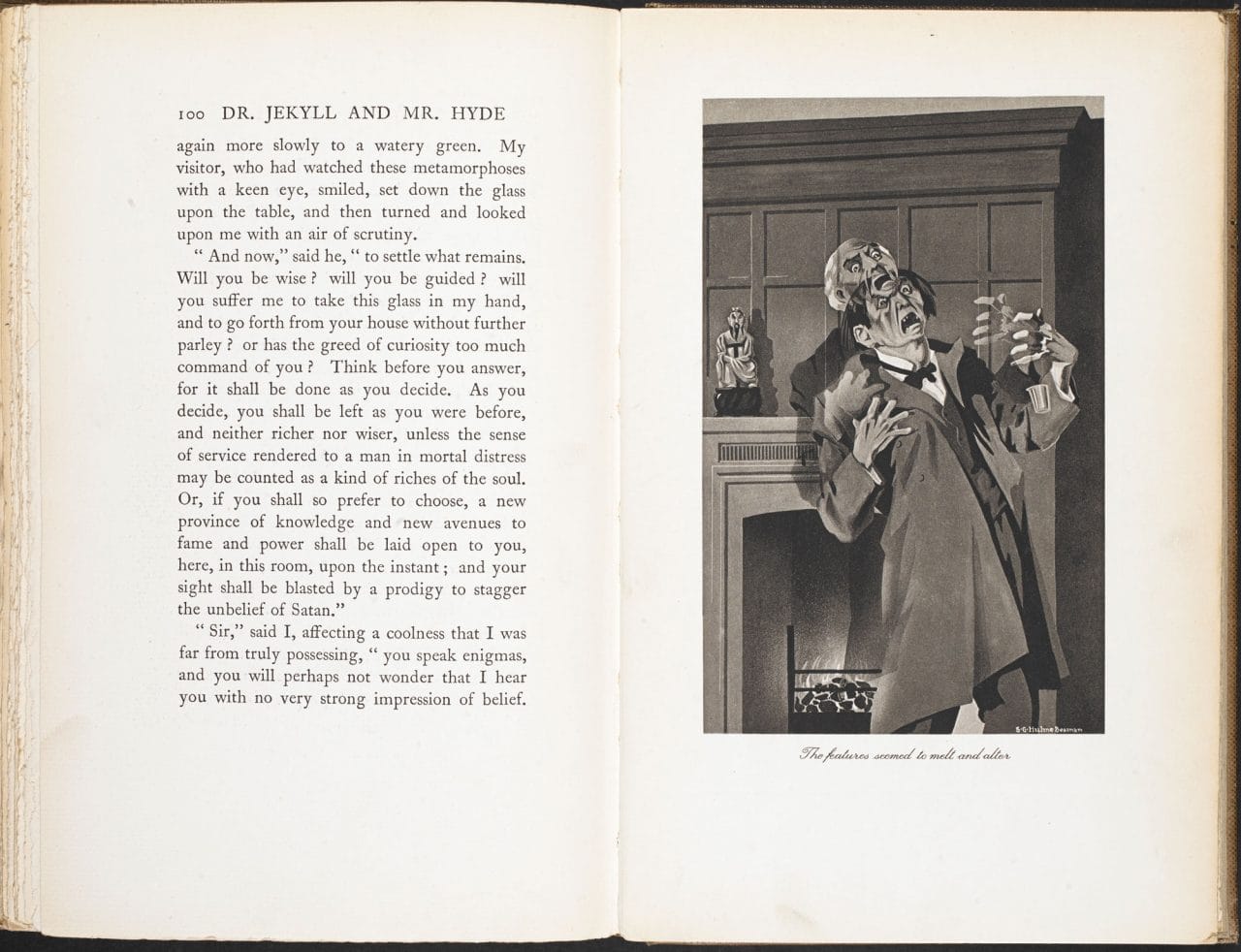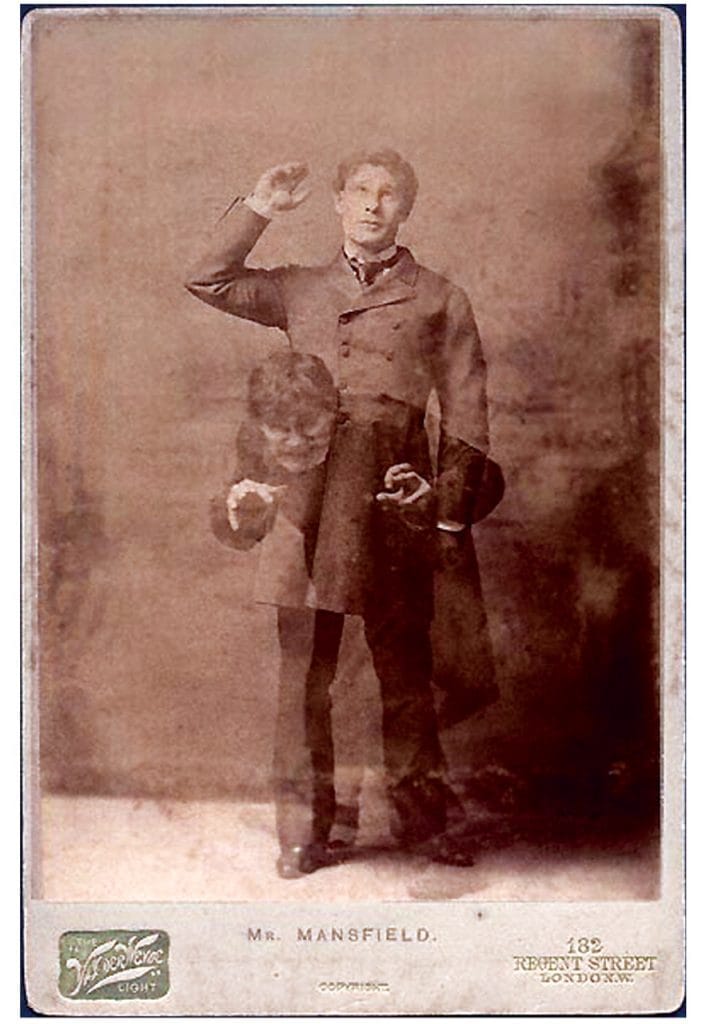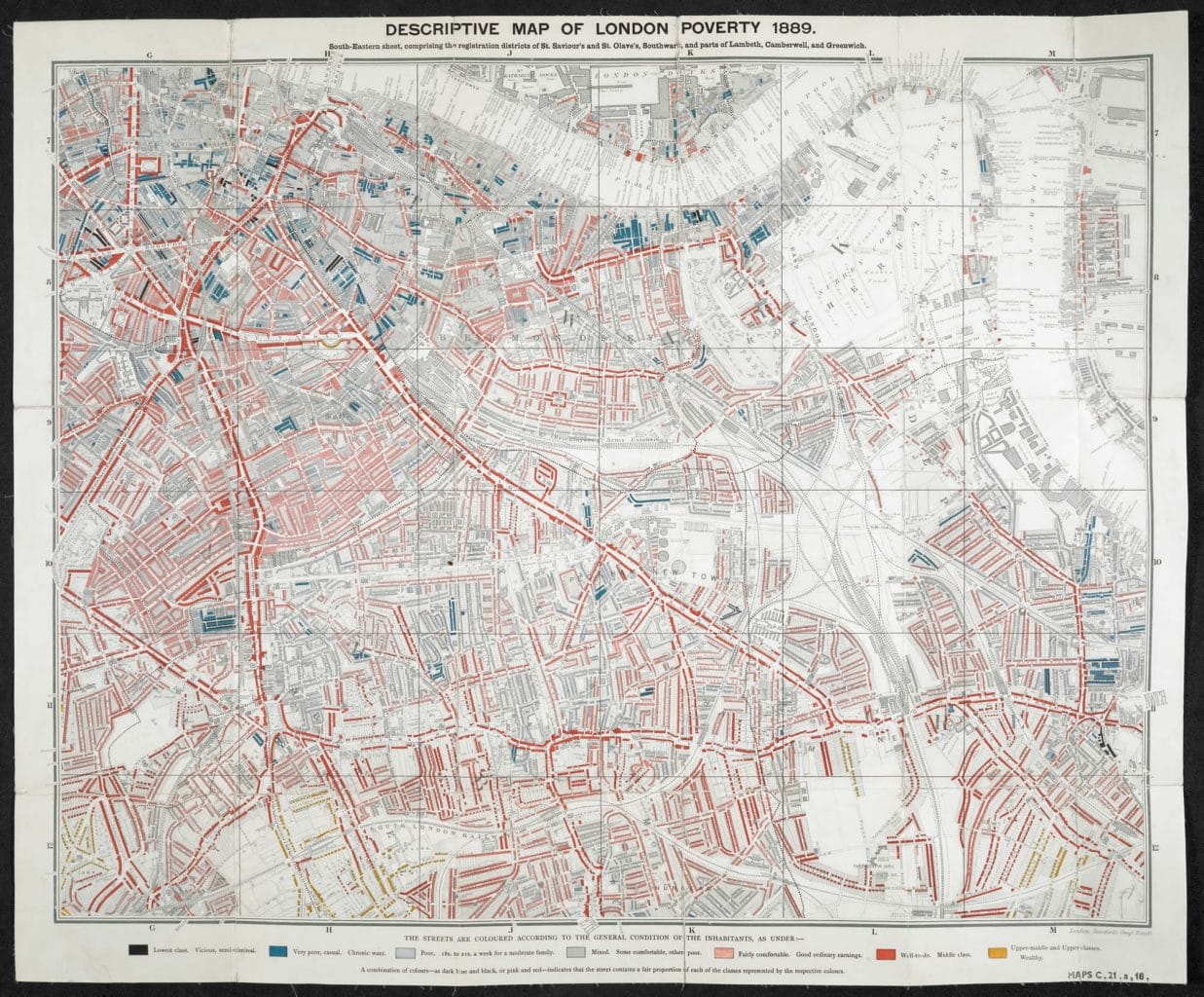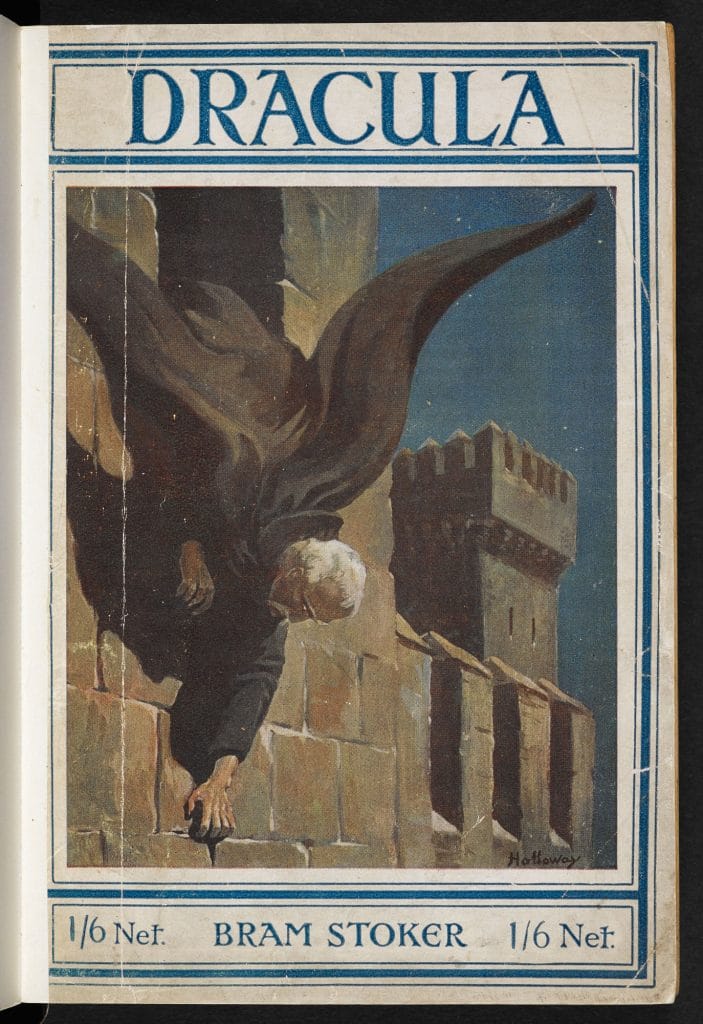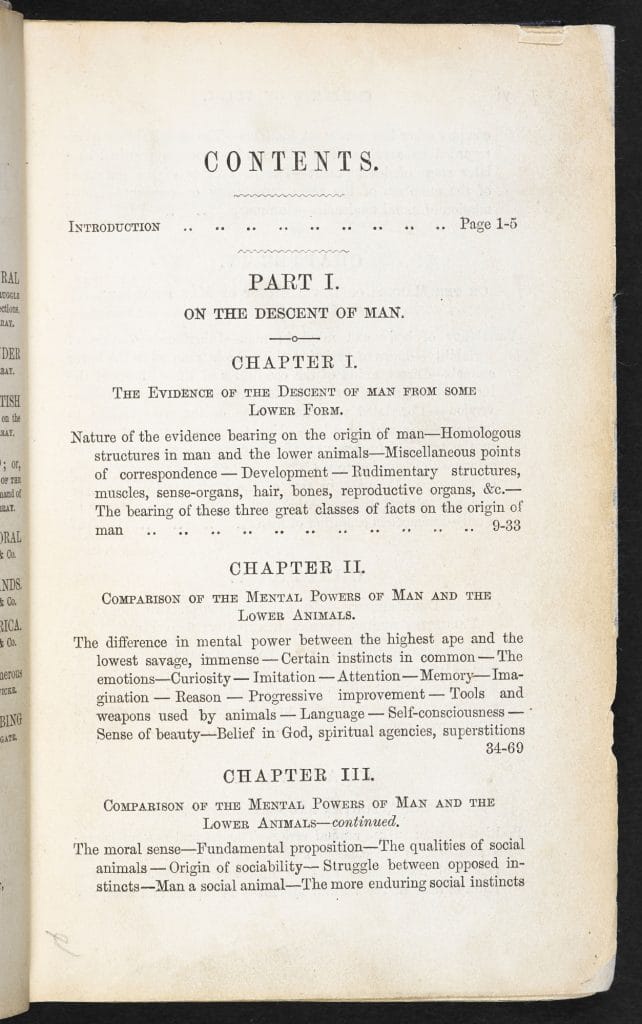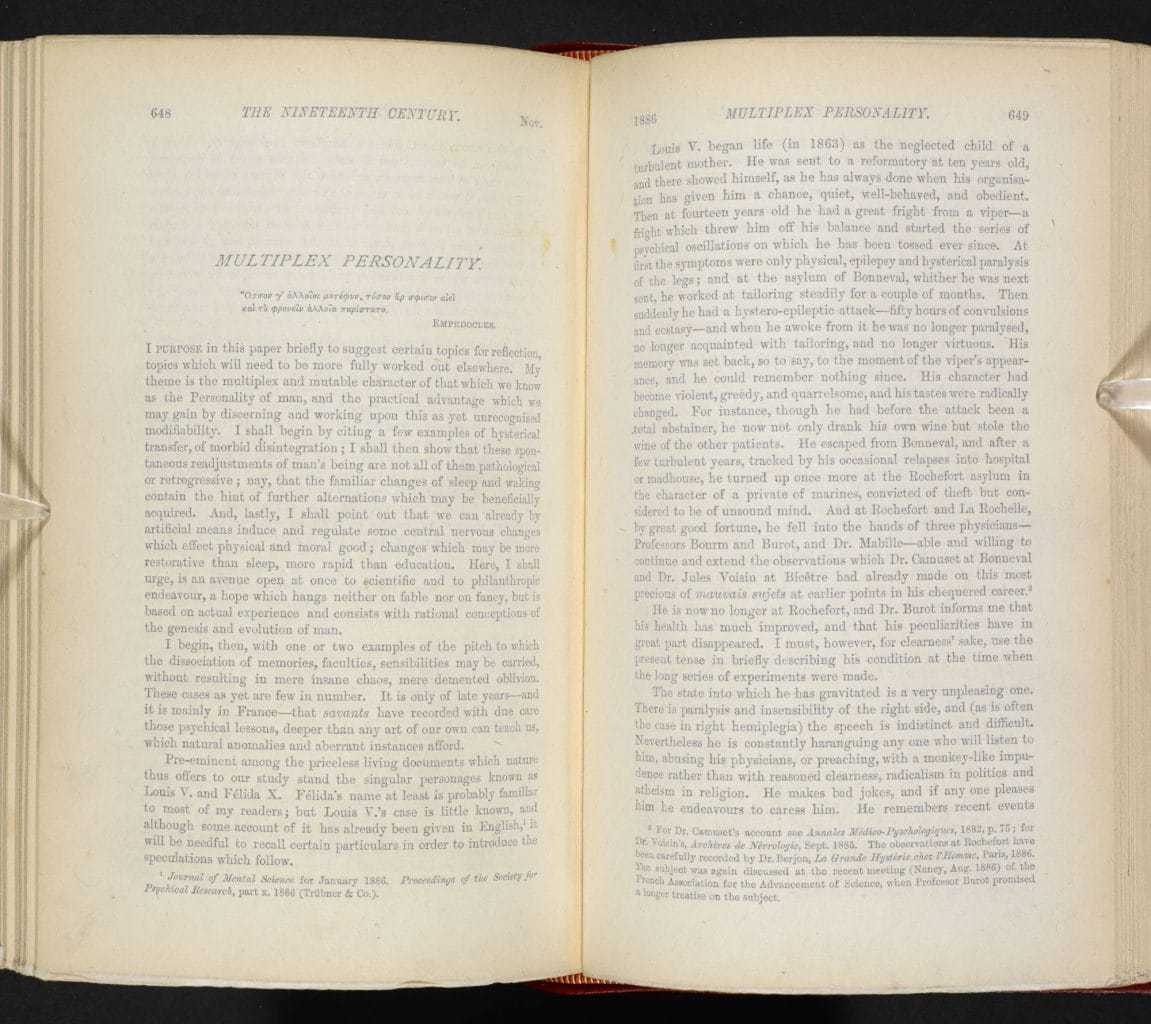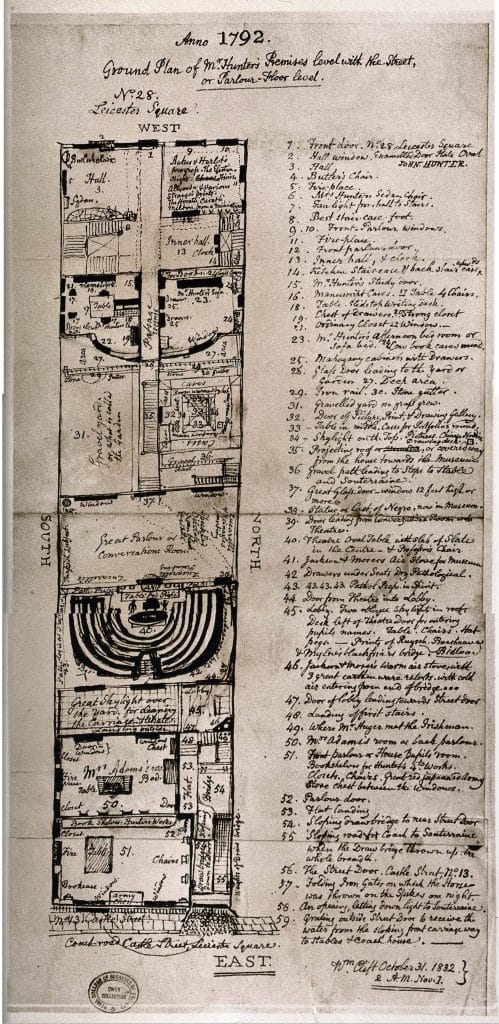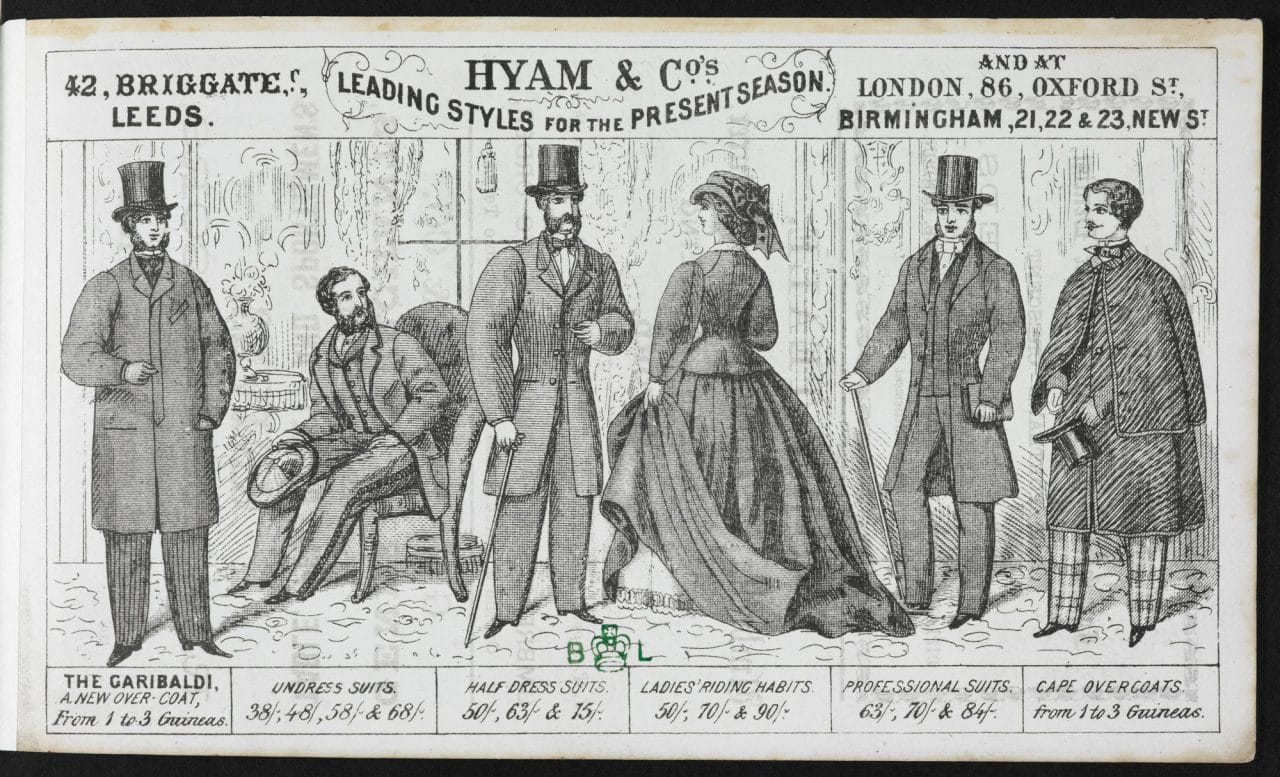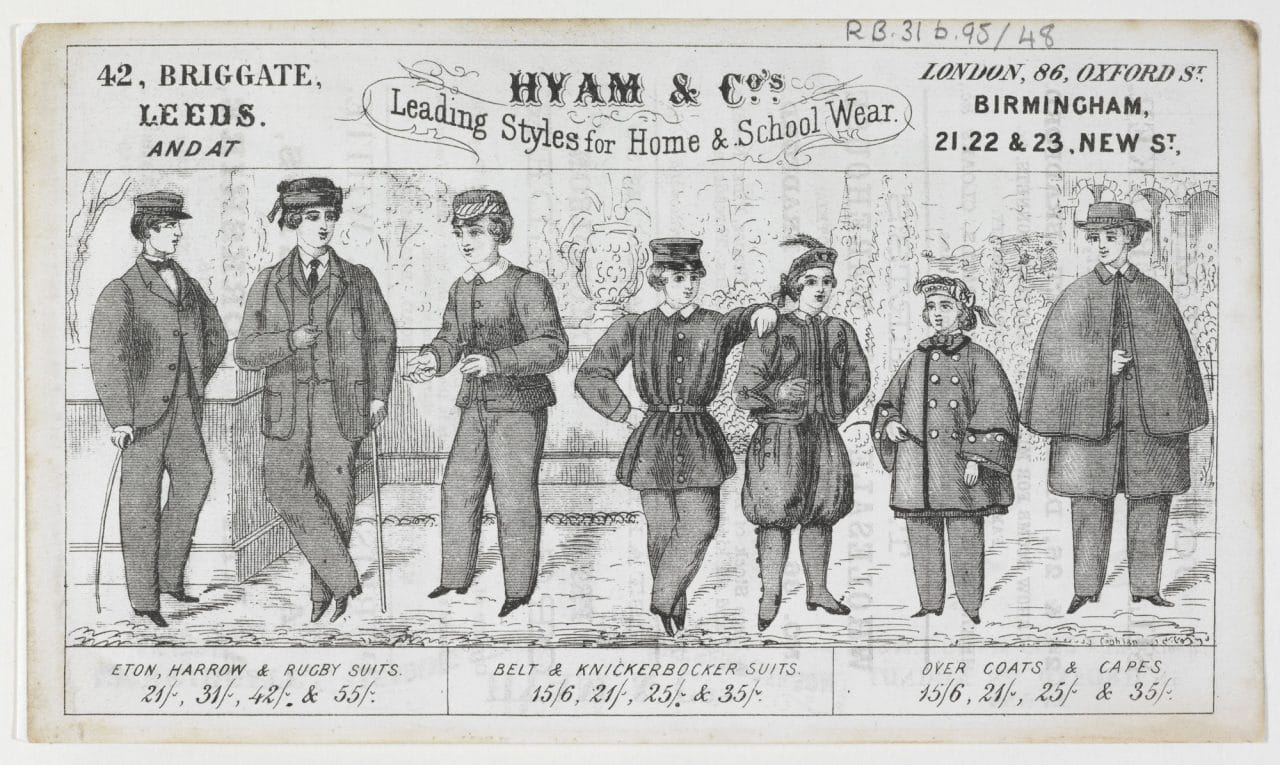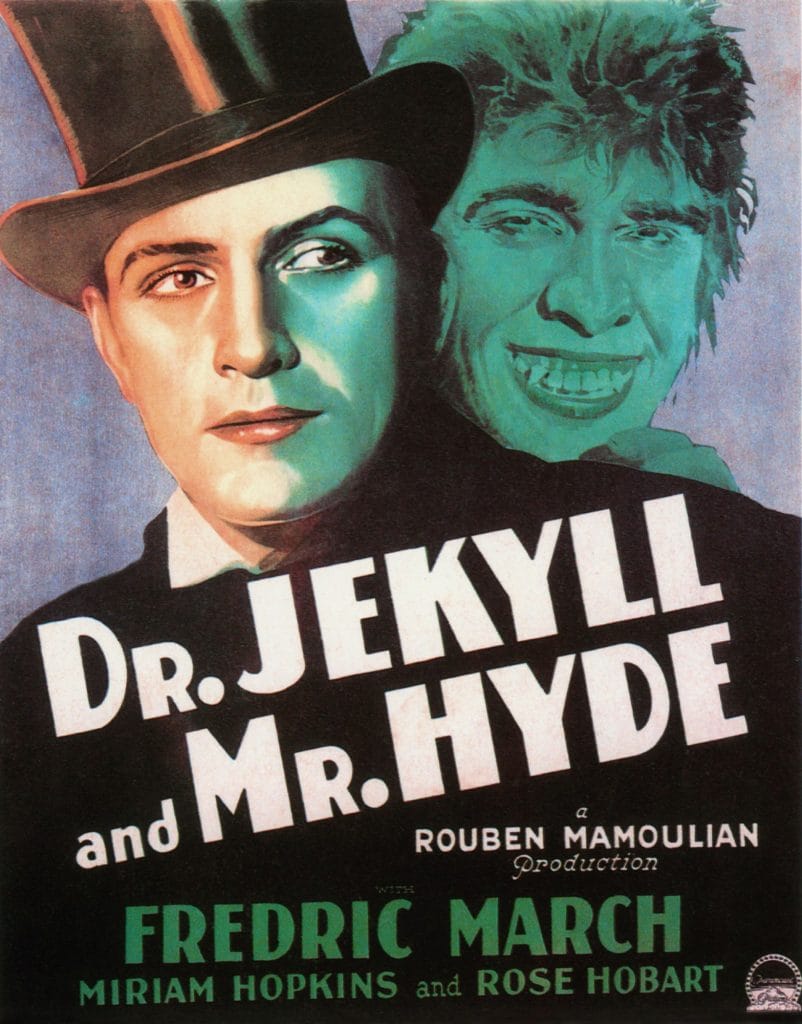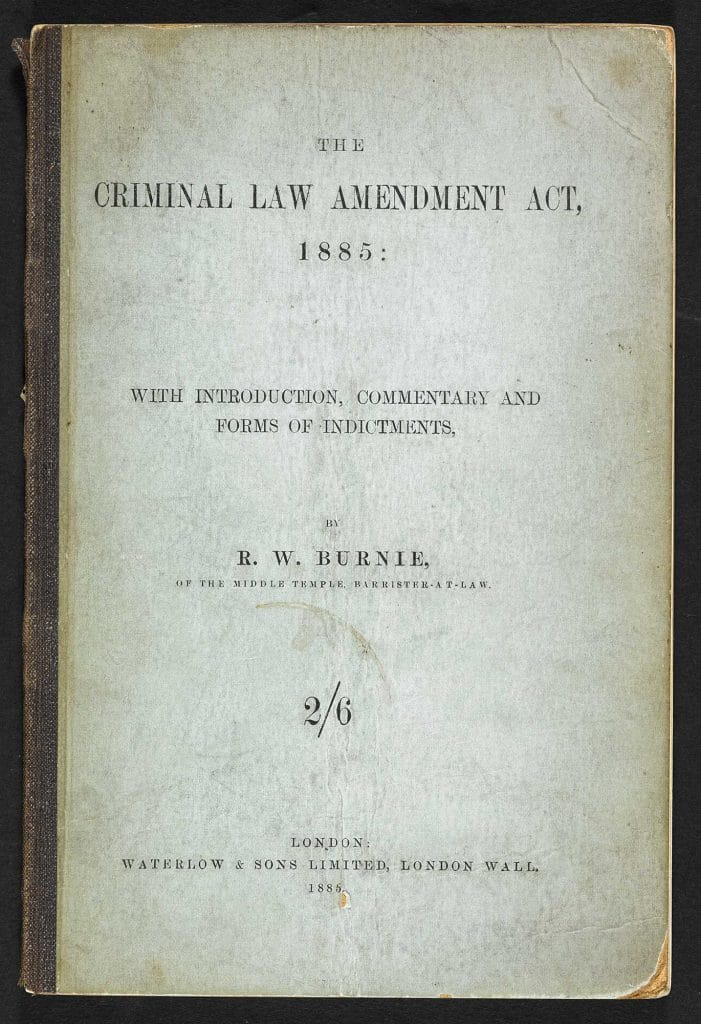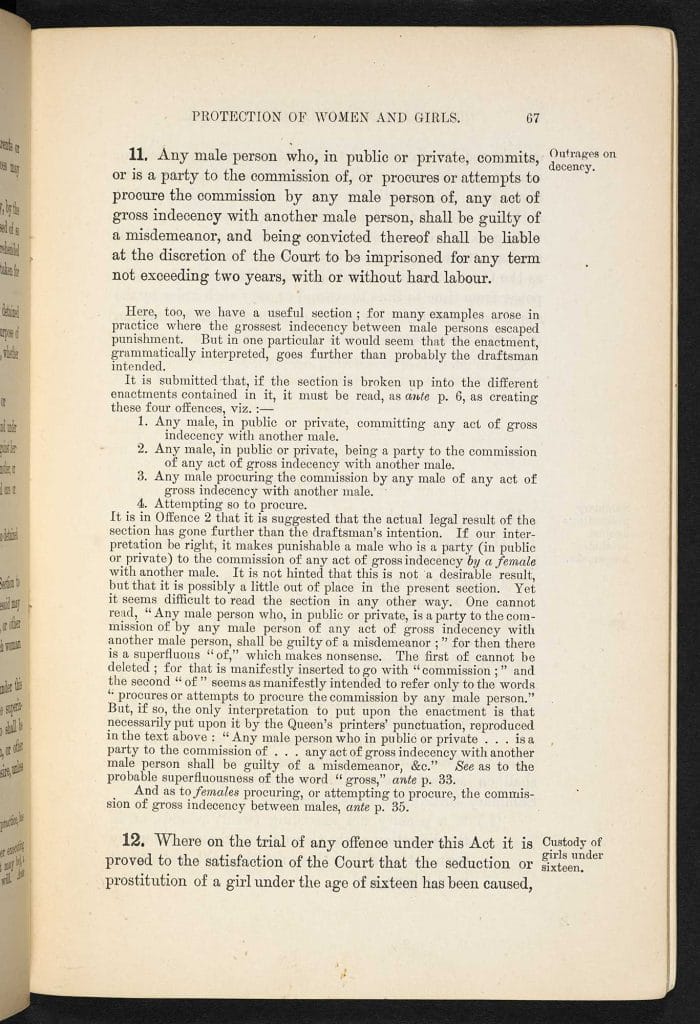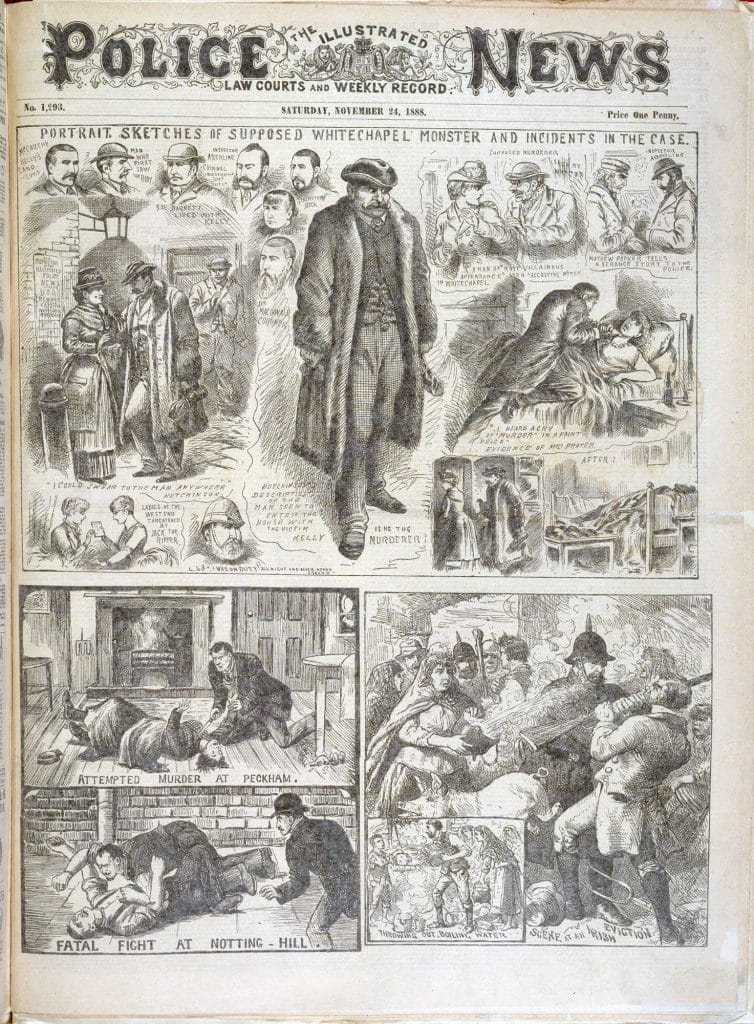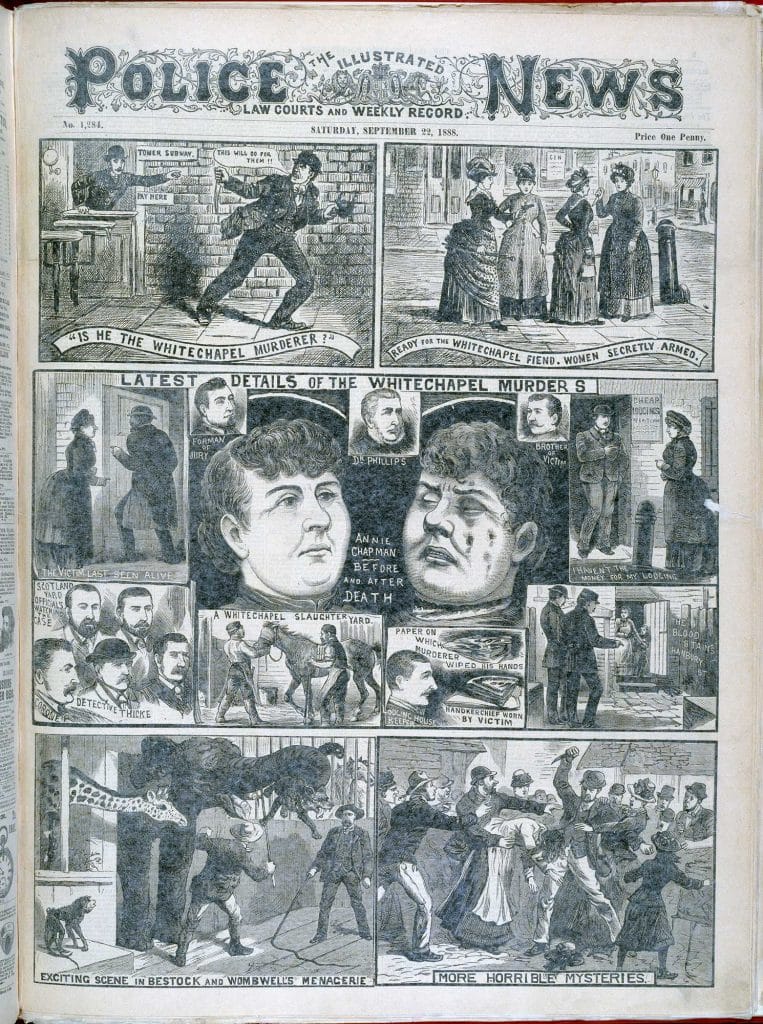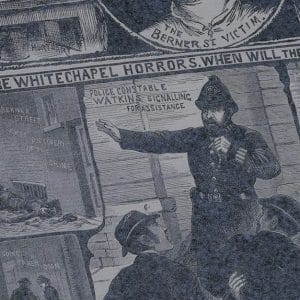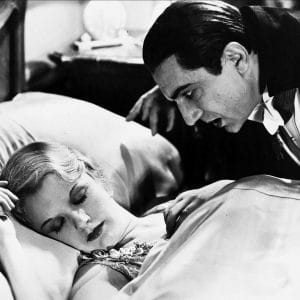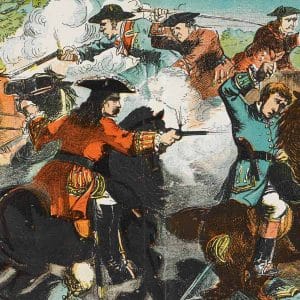
‘Man is not truly one, but truly two’: duality in Robert Louis Stevenson’s Strange Case of Dr Jekyll and Mr Hyde
Curator Greg Buzwell considers duality in Strange Case of Dr Jekyll and Mr Hyde, exploring how the novel engages with contemporary debates about evolution, degeneration, consciousness, homosexuality and criminal psychology.
Robert Louis Stevenson’s Strange Case of Dr Jekyll and Mr Hyde (1886) is a late-Victorian variation on ideas first raised in Mary Shelley’s Frankenstein (1818). Stevenson’s monster, however, is not artificially created from stitched-together body parts, but rather emerges fully formed from the dark side of the human personality. In the story Dr Jekyll, an admired member of the professional Victorian middle-classes, conducts a series of scientific experiments which unleash from his own psyche the ‘bestial’ and ‘ape-like’ Mr Hyde (ch. 10). Gothic fiction had examined the idea of the sinister alter ego or double before on many occasions but Stevenson’s genius with Jekyll and Hyde was to show the dual nature not only of one man but also of society in general. Throughout the story, respectability is doubled with degradation; abandon with restraint; honesty with duplicity. Even London itself has a dual nature, with its respectable streets existing side-by-side with areas notorious for their squalor and violence.
Evolution and degeneration
Viewed on a simple level, Dr Jekyll is a good man, much admired in his profession. Mr Hyde, meanwhile, is evil. He is a murderer; a monster who tramples upon a small girl simply because she happens to be in his way. On a deeper level, however, the comparison is not merely between good and evil but between evolution and degeneration. Throughout the narrative Mr Hyde’s physical appearance provokes disgust. He is described as ‘ape-like’, ‘troglodytic’ and ‘hardly human’ (ch. 2). As Mr Enfield, a well-known man about town and distant relative of Jekyll’s friend Mr Utterson, observes ‘There is something wrong with his appearance; something displeasing, something downright detestable’ (ch. 1). Some 15 years before Jekyll and Hyde, Charles Darwin had published The Descent of Man (1871), a book in which he concluded that humankind had ‘descended from a hairy, tailed quadruped’ which was itself ‘probably derived from an ancient marsupial animal’.[1] Going back even further, Darwin hypothesised that these stages of evolution had been preceded, in a direct line, by ‘some amphibian-like creature, and this again from some fish-like animal’. Such a nightmarish biological lineage that denied the specialness of humans, feeds into many late-Victorian Gothic novels. Dracula’s ability to transform into the shape of a wolf or a bat is one example, while Dr Moreau’s experiments upon the hapless animals on his island as he attempts a barbaric form of accelerated evolution is another. Stevenson’s portrayal of Hyde works in a similar fashion. Mr Hyde is regarded as physically detestable but perhaps only because he subconsciously reminds those he encounters of their own distant evolutionary inheritance. When Dr Jekyll’s medical colleague, Dr Lanyon, witnesses Hyde transform back into Jekyll, the knowledge that the ugly, murderous beast exists within the respectable Victorian scientist sends him first to his sick-bed, and then to an early grave.
Double lives and misleading appearances
The depiction of Dr Jekyll’s house was possibly based on the residence of famous surgeon John Hunter (1728-1793), whose respectable and renowned house in Leicester Square in the late 18th century also had a secret. In order to teach and to gain knowledge about human anatomy, Hunter required human cadavers, many of them supplied by ‘resurrection men’ who robbed fresh graves. These were brought, usually at night, to the back entrance of the house, which had a drawbridge leading to the preparation rooms and lecture-theatre.
The front aspect of Dr Jekyll’s house presents a ‘great air of wealth and comfort’ (ch. 2). Meanwhile Mr Hyde, soon after we first encounter him, is seen entering a building which displays an air of ‘prolonged and sordid negligence’ (ch.1). The twist is that the reputable front and the rundown rear form two sides of the same property. Stevenson is not only making the point that the respectable and the disreputable frequently exist in close proximity, but also that a respectable façade is no guarantee against dark secrets lurking within. In a similar fashion, the seemingly decent Mr Enfield, a friend of the lawyer Mr Utterson, first encounters Hyde while ‘coming home from some place at the end of the world, about three o’clock of a black winter morning’ (ch. 1). Exactly where Mr Enfield has been, and what he has been up to, are never made clear but it sounds far from innocent. Throughout the book the people and events that initially seem innocent and straightforward become dark and sinister when viewed more closely.
Double-consciousness
Just as the differing appearances of Dr Jekyll and Mr Hyde play upon the theories emerging from Charles Darwin’s work, so their differing personalities explore contemporary debates about moral behaviour and the possible plurality of human consciousness. By literally splitting the consciousness of Dr Jekyll into two – the decent side that attempts, and largely succeeds, in suppressing desires that run contrary to the dictates of society; and the amoral side that runs riot in an attempt to gratify animal desire – Stevenson explores in a heightened fashion the battles played out in every one of us. As Dr Jekyll observes ‘I saw that, of the two natures that contended in the field of my consciousness, even if I could rightly be said to be either, it was only because I was radically both’ (ch. 10). Through Hyde, the respectable Dr Jekyll is freed from the restraints imposed by society – ‘my devil had been long caged, he came out roaring’ (ch. 10). In his confession at the end of the book, Jekyll observes that, ultimately, he will have to choose between being Dr Jekyll or Mr Hyde. To become the latter would mean giving up on noble aspirations and being ‘forever despised and friendless’. (ch. 10) To become Jekyll, however, means giving up the sensual and disreputable appetites he can indulge as Hyde. In spite of the curious circumstances of his own case it is, as the melancholy Jekyll observes, a struggle and debate ‘as old and commonplace as man’ (ch. 10).
Homosexuality
In an early draft of the book, Stevenson has Dr Jekyll confess ‘From an early age…I became in secret the slave of certain appetites’. Such an observation inevitably leads us to wonder what such ‘appetites’ could have been. For some as the book’s other characters – as well as the first readers of the book – unaware that Jekyll and Hyde are the same person, the relationship between the two must have appeared puzzling. Why would the respectable Jekyll grant the vile Hyde free access to his house, let alone alter his will so that in the event of his death or disappearance Hyde will inherit. For Mr Enfield there can only be one answer: ‘Blackmail, I suppose; an honest man paying through the nose for some of the capers of his youth’ (ch. 1). Stevenson, because of the era in which he was writing, could not make specific references to homosexuality, but much of the plot initially hints at Hyde blackmailing Jekyll because of the doctor’s unorthodox sexual preferences.
Homosexuality and blackmail were frequently linked in this period. Section 11 of the Criminal Law Amendment Act, 1885 (the year in which Stevenson was writing his tale), made ‘gross indecency’ – a nebulous term that was not precisely defined – a criminal activity. In practice, the Act was primarily used to prosecute homosexuals on the flimsiest of evidence and was dubbed a ‘Blackmailer’s Charter’. Dr Jekyll is a bachelor – indeed the entire story is played out amongst a small circle of unmarried men. As implied by comments such as Mr Utterson’s ‘It turns me cold to think of this creature [Hyde] stealing like a thief to Harry’s bedside’, homosexuality (either as a secret from the doctor’s past, or else as a current relationship between the youthful Hyde and the lonely Jekyll) is a thinly-veiled theme throughout (ch. 2). Even the behaviour of the elderly MP Sir Danvers Carew, who meets his death at Edward Hyde’s hands after ‘accosting’ Hyde ‘with a very pretty manner’ late one night down by the river, takes on a new light once the reader becomes aware of homosexuality as an undercurrent in the story (ch. 3). In this tale of double-lives nobody is quite what they initially appear to be.
The fascinating instances of doubling in Stevenson’s tale did not come to an end upon the book’s publication. In a macabre twist, events from real life began to overlay themselves upon the narrative. The Whitechapel Murders occurred in the autumn of 1888, two years after the publication of Jekyll and Hyde, and the real murderer and the fictitious Mr Hyde were swiftly paired in the public imagination. Indeed, the murders became so entangled with the story, Richard Mansfield who famously played Dr Jekyll and Mr Hyde in the stage adaptation produced a year after the publication of the novel, was accused of being the Ripper murderer by a member of the public.
When Hyde attacks Sir Danvers Carew he beats him to death with his walking stick, commenting afterwards ‘With a transport of glee, I mauled the unresisting body, tasting delight from every blow’ (ch. 10). The ferocity of the attack mirrors the intensity of the Ripper murders. Jekyll and Hyde pointed towards an unpalatable truth. Mr Hyde, with his ‘ape-like’ appearance conformed to contemporary criminological theory in which delinquents displayed visible traits indicative of their unpalatable natures. Dr Jekyll, however, a ‘large, well-made, smooth-faced man of fifty’ would not conform to such a theory and yet, as we know, Jekyll and Hyde are one and the same; two faces of a single personality (ch. 3). This leads to the uncomfortable possibility that one could pass a monster such as Jack the Ripper in the street and yet only see a respectable, civilised gentleman exhibiting absolutely no trace of the depraved killer lurking within Jekyll and Hyde and Jack the Ripper.
The text in this article is available under the Creative Commons License
撰稿人: Greg Buzwell
Greg Buzwell is Curator for Printed Literary Sources, 1801–1914 at the British Library; he is also co-curator of a major exhibition on Gothic literature, Terror and Wonder: The Gothic Imagination, which ran at the Library from October 2014 to 20 January 2015. His research focuses primarily on the Gothic literature of the Victorian fin de siècle. He is also editing a collection of Mary Elizabeth Braddon’s ghost stories, The Face in the Glass and Other Gothic Tales, for publication this autumn.
